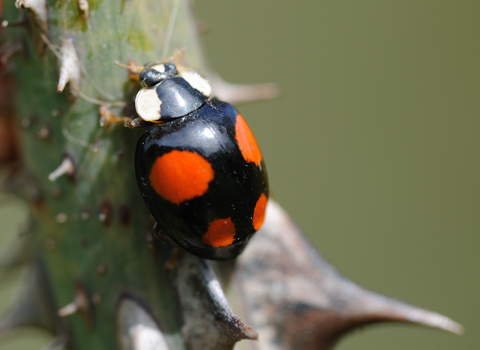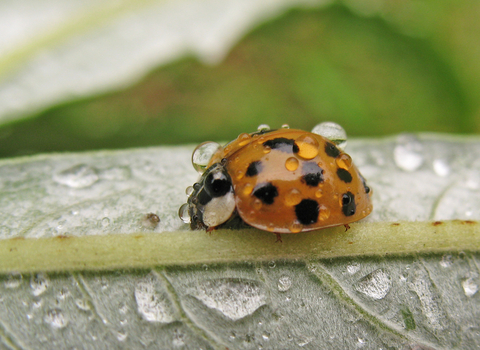
Harlequin Ladybird ©Amy Lewis

Harlequin Ladybird ©Rachel Scopes
Harlequin ladybird larva ©Tom Hibbert
Harlequin ladybird
A non-native species originating from Asia, the harlequin ladybird is prevalent in towns and gardens.
Scientific name
Harmonia axyridisWhen to see
March to NovemberSpecies information
Category
Statistics
Length: 8mmInvasive, non-native species.
